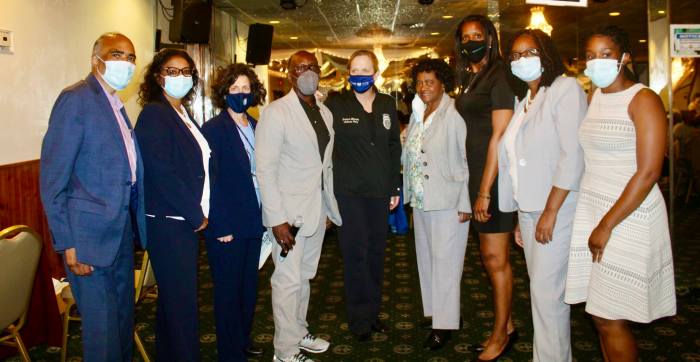The time is ripe to better defend our society’s most voiceless members by enforcing and strengthening New York State’s animal cruelty laws.
In my time as district attorney for Queens County of New York, I have encountered countless cases involving cruel acts against innocent and defenseless animals. Unfortunately, New York’s criminal statutes currently treat those who damage property more harshly than those who commit brutal acts of violence against these sentient beings who feel pain and suffer distress much in the same way as humans do.
It is time to correct this imbalance and hold those who abuse animals fully accountable for their heinous actions.
Polls reveal that almost 70% of U.S. households have a companion animal, and that most households with pets consider them to be family members. It is only fitting to allocate these cherished pets the same protections against negligence and abuse.
Addressing animal cruelty not only protects vulnerable animal victims, but also helps to prevent potential harm to humans as animal abusers are more likely to engage in interpersonal violence. Recent tragedies have reminded us of this fact: a number of accused mass shooters in this country allegedly engaged in acts of severe animal cruelty before carrying out crimes against people.
This correlation between animal abuse and violence toward humans, known as the “Link,” is supported by decades of research and studies. The “Link” notes the co-occurrence of animal abuse with other violent behavior, including domestic violence, as well as child and elder abuse, and recognizes that animal abuse can be a concerning predictor of future crimes against people.
In fact, for these reasons, in 2016, the FBI began tracking animal cruelty crimes nationally and reclassified the crimes as top-tier Crimes Against Society in the same category as murder, rape and arson. Animal cruelty is simply not an isolated issue and investigating and prosecuting animal abuse is in the interest of protecting not only animals against future violent crimes, but people as well.

In my office, there is a dedicated Animal Cruelty Investigations Unit to investigate and prosecute animal cruelty cases. Prosecutors in that unit possess unique expertise to analyze a full spectrum of animal cruelty crimes. The unit also collaborates extensively on these matters with law enforcement, veterinarians and pathologists, animal welfare organizations, psychologists, and social workers as a comprehensive, multifaceted approach to combating animal abuse.
In Queens County, we have seen too many cases of animal abuse in domestic violence situations as an effective weapon of retaliation, power, and control, which may also extend to child and elder abuse.
Many survivors of domestic violence report that their abusers had threatened or carried out harmful acts against a beloved companion animal; and survivors delay leaving the abuser for fear that harm would come to their animal. Many survivors also reported that the abuser had committed acts of cruelty against animals in the presence of a child, which serves to perpetuate the cycle of violence and desensitize our youth.
The state’s Aggravated Cruelty to Animals statute, enacted in 1999, was intended to provide a felony for particularly egregious animal cruelty, but it only applies to companion animals, defined as a dog or a cat. The statute was dubbed “Buster’s Law” for a cat who was doused with kerosene and set afire.
However, Buster’s Law carries a maximum jail sentence of only two years. By contrast, the crimes of second- and third-degree criminal mischief for damaging property that is inanimate, such as cars, carry maximum prison terms of four and seven years, respectively, two and three times greater than the maximum sentence for torturing a living being.
Consecutive sentences are also unavailable for offenses under this law, which means that an abuser can kill or seriously injure many companion animals and receive the same sentence as for harming one. In addition, there is no independent penalty for threatening to kill a domestic partner’s animal as a means of forcing compliance with an abuser’s demands. What appears to weaken these laws even more is that the animal cruelty statute is housed in New York State’s Agriculture and Markets Law, rather than the Penal Code, where it belongs.
New York has been a leader in protecting our vulnerable community members and was the first state in the nation to enact animal cruelty legislation. In each of these ways, our laws fail to protect one of the most vulnerable segments of our community, and these failures further demonstrate our indifference to violence toward animals, who desperately need our protection, just like any other facet of society.
The time has come to recognize the seriousness of animal cruelty crimes by allocating appropriate penalties for these violent acts and enact new stronger laws to protect these defenseless and voiceless victims. Doing so will not only protect our animals but will combat the oftentimes impending violence against humans as well. Violence should not be accepted in any form.
Melinda Katz is the Queens County district attorney.

























